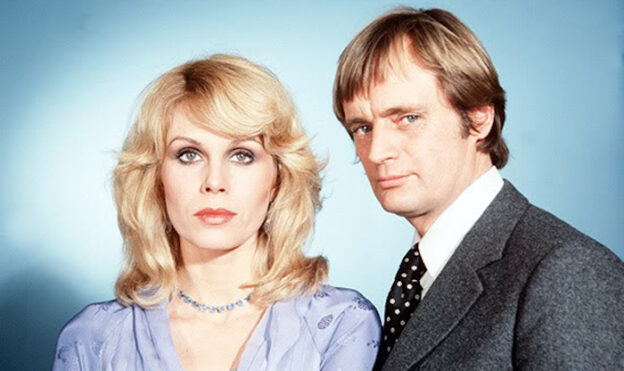The evanescent nature of time binds together the creative realms of David McCallum and P.J. Hammond, showcasing a nuanced narrative journey from the mystical enchantment of “Ace of Wands” to the temporal mysteries of “Sapphire & Steel.” As we reminisce about McCallum’s passing on September 25, 2023, the intricate tapestry of these visionary pursuits unravels, revealing a cherished epoch of British television where the realms of the known and unknown intriguingly coalesced.
Contents
Introduction
The realm of British television, especially during the late 20th century, was a cauldron of inventive storytelling, often intertwining the mystical with the everyday. The passing of David McCallum on September 25, 2023, beckons a reminiscence of an era where the uncanny found a natural habitat on the small screen. His legacy, alongside those of other notable figures such as P.J. Hammond, forms a captivating narrative about the interplay between the mystical and the mundane, primarily through the lens of the celebrated series, “Sapphire & Steel” and its thematic precursor, “Ace of Wands”.
Peter J. Hammond
P.J. Hammond, the mind behind the enigmatic worlds of “Ace of Wands” and “Sapphire & Steel,” epitomizes a narrative fascination with the unknown that defies the conventional storytelling of his time. His imaginative prowess brought forth a breed of televised fantasy that navigated the mystic and the scientific, forging a unique space in the audience’s consciousness. Through the lens of the supernatural and the temporal, Hammond delved into uncharted territories, striking a captivating balance between eerie mysteries and the resonant human experience. This narrative legacy, significantly marked by the collaboration with David McCallum in “Sapphire & Steel,” continues to echo through the annals of science fiction and fantasy, enshrining Hammond’s position among the distinctive storytellers of his generation.
Ace of Wands
The tale begins with “Ace of Wands” (1970-1972), a pioneering venture into the supernatural, created by Trevor Preston. It was a narrative spun around the central character, Tarot, a stage magician with actual supernatural abilities, exploring mystic realms with his allies. The show subtly kindled a spark for esoteric storytelling on British television.
Sapphire and Steel
However, the tale deepens with the advent of “Sapphire & Steel”, created by P.J. Hammond, which aired from 1979 to 1982. The series featured David McCallum as Steel, alongside Joanna Lumley as Sapphire, two temporal agents embroiled in a quest to repair rifts in time. McCallum’s portrayal of the stoic yet enigmatic Steel was mesmerizing, and it’s in “Sapphire & Steel” that McCallum’s and Hammond’s legacies intertwine. Hammond’s writing was a deep dive into the uncanny, often blurring the lines between time, reality, and the supernatural, while McCallum’s portrayal brought a face of steel, no pun intended, to these abstract adventures, grounding them with a human touch.
Comparing Aces of Wands and Sapphire and Steel
The thematic threads between “Ace of Wands” and “Sapphire & Steel” are fascinating. While the former was more of a whimsical exploration of mystical themes, the latter plunged into the chilling depths of temporal and existential enigmas. The two series, though distinct, shared a thematic lineage of exploring the unknown, albeit in different tonal landscapes. It’s intriguing to ponder how the creative ethos of “Ace of Wands” perhaps echoed through the eerie halls of “Sapphire & Steel”, carried forward by the winds of time.
David McCallum
The spotlight, however, remains on David McCallum, whose portrayal of Steel was nothing short of iconic. His nuanced performance, along with Hammond’s ingenious storytelling, created a mystical aura that resonated with the audiences, making “Sapphire & Steel” a hallmark of eerie, intellectual British television.
Conclusion
In retrospect, the legacies of David McCallum and P.J. Hammond are emblematic of a bygone era, where the boundaries of reality were teased and tested on television screens, evoking a sense of wonder and eerie contemplation among audiences. The curtains may have drawn to a close with McCallum’s passing, yet the ripples of their collaborative genius continue to mesmerize, as the mystical tales they spun linger on, etched in the annals of television lore.
